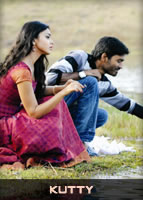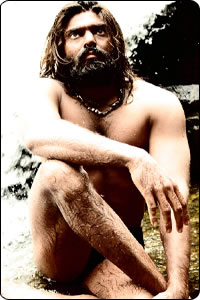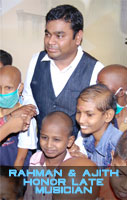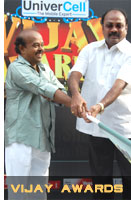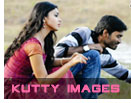|
and
aghori sadhus and is a movie in its true
ART form - a movie sans melodrama and fairy
tales. I happened to watch the film recently
and like most people I felt a sense of incompleteness,
which can be attributed to the lack of complete
understanding of the film's true intentions.
Hence, I set out to explore the rather unknown
terrain of Bala's seventh world. Luckily,
I stumbled upon on an excellent 'Naan Kadavul
for Dummies' type write-up from Jayamohan,
which helped me understand a lot of otherwise-unknown
aspects of the movie. The intention of this
post is to provide an insight into Naan
Kadavul and is part of my journey to understand
the film better.
Naan Kadavul is a guided tour of the largely
unknown world of aghori sadhus and beggars.
From a bird's eye view, the two tales would
appear largely disjoint and one might get
an impression that there is not much in
common between the two groups. But, there
is actually a strong connection between
beggars and aghori sadhus - only that Bala
has played it subtle. Both aghoris and beggars
belong to the same fictional seventh world.
In a way, aghoris are beggars too, only
that they chose their destiny. Bala has
scripted a few scenes to convey this - the
scene where a police constable mistakes
Rudran for a beggar when he gets cocaine
crazy. There are also sequences where the
'poli-samiyargal' talk about Rudran in the
same breadth as beggars. While beggars are
depicted as slave workers, Aghoris consider
themselves to be super natural - next only
to 'Kal Bhairav'. Naan Kadavul is a tale
of two extreme groups belonging to the same
dark world. It serves as a meeting point
of the contrasting lives of Rudran and Hamsavalli.
Naan Kadavul believes that there is No God
in the Seventh World. Bala has emphasized
this belief throughout the tour in the form
of various scenes and dialogues with a tinge
of dark humor. A lot of the explicit content
has been censored. Jesus and Buddha were
supposed to be present as spectators in
the scenes where the beggars get beaten
up by Rudran & Co. The Gods of the world
were supposed to be present when Hamsavalli
begs Rudran for death. The objective was
to take a dig at ALL religions. However,
the censor board had other thoughts. To
stress the point further, the physically
disabled beggars were in the costumes of
Lord Sivan, Parvathi and Murugan. This is
a subtle way of saying that the Gods of
the world that we are in, are nothing more
than handicapped helpless people in the
seventh world. This is brilliant character
sketching and symbolism from Bala. The beggars
who never go inside the temple, however,
consider the 'Mangandi Saami', who is a
beggar himself, as their God. Another way
of saying that if there is any God in the
seventh world he has to be a beggar too.
The character of Hamasavali is sketched
in a way to convey that in the dark world
even the people who initially believe in
God would eventually be forced by their
situation to give up their belief. She surrenders
to a nun and gets converted to Christianity
but eventually Thandavan manages to ‘buy’
her. This puts her in a miserable situation
and she loses her faith in God and believes
that only Rudran can relieve her from this
world of misery. She conveys this to Rudran
when she gets to meet him and her belief
(or the lack of it) is conveyed to us by
the dialogue where she accuses that no God
cared for her miseries.
Naan Kadavul begins the tour from Kasi and
all-about-aghoris is narrated by a sage
to Rudran's father. The two main duties
of aghoris - to punish the baddies and to
give direct salvation to people whose lives
are more miserable than death by killing
them - are preached to Rudran by his guru.
He asks Rudran to go along with his father
and also tells him to come back during the
right time. An aghori can attain complete
aghori-ness only after he renounces all
his inner desires. Hence Bala has scripted
the film in a way where Rudran begins to
have some subtle feelings for Hamsavalli
and goes on to show how Rudran denounces
his feelings for her and attains aghori-ness.
Rudran's emotions and feelings for Hamsavalli
remain very subtle. He realizes his feelings
for her the first time he meets her in the
cave and understands the actual reason for
which his Guru has sent him down here. He
understands that he needs to renounce his
affection for her immediately and goes to
the graveyard the same night, where he actually
renounces her in a 'Kal -Bhairav' pose.
During his stay at his hometown, Rudran
accomplishes the two main duties for aghoris
as well by killing Thandavan (the skin cut
in Rudran's forehead is symbolic of Sivaperuman)
and by helping Hamsavalli attain direct
salvation. Thus, Hamsavalli plays a great
part in helping Rudran attain aghori-ness
and goes to show the ‘strong connection’
between the otherwise contrasting characters.
Naan Kadavul, for the most part, revolves
around the life of beggars - the citizens
of the seventh world. One may get a feeling
that the film spends way too much time here.
But, this is where the film remains honest
to its intentions. The dark world is symbolically
represented by the underground facility
of Thandavan. The first few scenes in their
story provide enough detail on their miseries
and establish the various characters. Once
we get acquainted with them, we get to see
their lighter side as well and enjoy the
dark humor. There are a lot of small sub
plots scripted as well. The objective behind
the detail is to drive the message that
the beggars, in spite of not having much
control on their life, still manage to lead
a happy life. In spite of their own miseries,
they care for each other's sufferings and
live like a happy family. And Bala wanted
to clear the general misconception that
the beggars have a soft corner for people
who give alms to them. Beyond a point, they
are not concerned much about the money and
as shown in various sequences, they derive
their humor by mocking at the people who
visit the temple. The characters dressed
like Gods, mocking and laughing loud at
the people visiting the temple is symbolic
to Gods mocking at their superstitious beliefs.
Naan Kadavul is anything but judgmental.
It doesn't preach atheism nor does it say
that it is better to die than to lead a
miserable life. It leaves the judgmental
part to its audience. As a movie in its
true ART form, Naan Kadavul chooses to show
the lives of two contrasting groups of people
‘as is’, goes one step higher
by establishing a strong connection between
the groups symbolically and stops there
- true to its intent.
Cheers,
Arvind
arvindrockz@gmail.com
|


